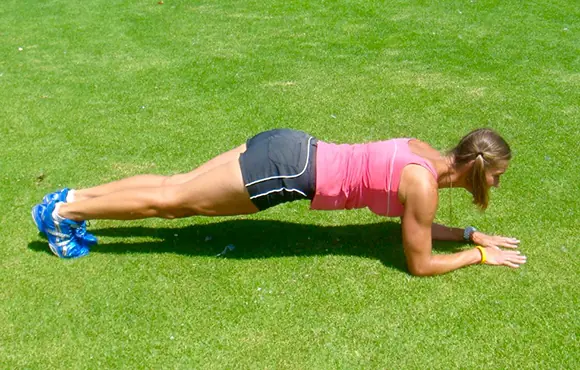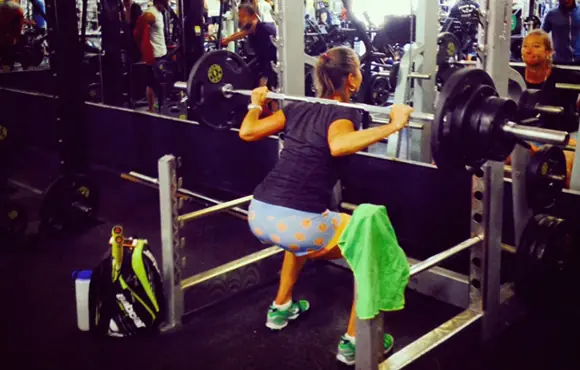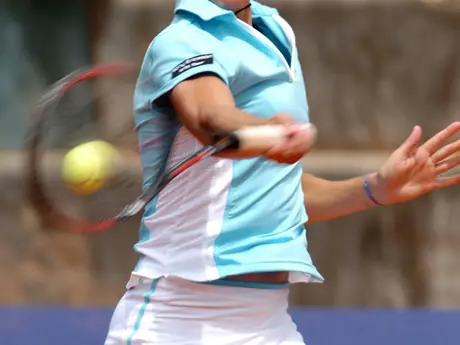Psoas on the Treadmill
Walking or running on the treadmill is one of the more popular fitness activities. Tennis players often turn to the treadmill to as part of a cardiovascular fitness program. Unfortunately, it's not the best option for the already compromised psoas.
The natural gait pattern is through a hip extension, where you push off the ground using the backside of your body (glutes, hamstrings calves). The treadmill changes the natural pattern to one with greater hip flexion. Because the treadmill belt is rolling from under you, your feet have no resistance when they push off. Instead, you have to lift your leg out and up in front of you, recruiting the already too tight psoas. If you run a lot, make sure to dump the treadmill and get out into nature as much as you can.
Psoas at the Desk
You cannot just stop going to work or school, but you may change your working position. Standing desks are becoming more popular, even though the price levels are still high. You can create your own standing desk by adding a special stand or even a simple shipping box on the top of your desk. For me (I am 6 feet tall), the 15x10x12-inch box does it perfectly. And it's only $2.
Another option is kneeling by your desk. I use the Airex balance, which you can use for strengthening your intrinsic feet muscles and balance as well. I donated my big comfy office chair and purchased a simple stool, that I can easily slide under the desk while kneeling or standing. The stool also allows me to keep good posture while sitting and if I feel adventurous and need more stretch in my hips, I can sit on it with crossed legs (half lotus or lotus).
Psoas on the Floor
The Asian populations (and other non-western populations) have the great habit of sitting on the floor. They sit with crossed legs in lotus or pigeon positions, their hips are beautifully flexible and they have no issues with tight psoas and lower back pains. They also sit in deep squat position and look extremely comfortable, because their joints are fully flexible. This is something we should work on more and if you have a moment, while watching TV or socializing, why not sit or squat on the floor? A 15x10x12-inch box is perfect for the laptop while sitting or squatting on the floor.
Psoas stretching and myofascial release
All the above measures may seem a little bit drastic or weird. But believe me, only a few days of reducing the sitting time will make you feel so much better. And if you keep stretching your quadriceps and do hip-flexor myofascial release, the change will happen even faster. You'll notice that your athletic performance will increase, because when your hips, pelvis and lower back get better aligned, your movement and force production will be more efficient.
Take good care of your psoas on a regular basis. You will feel better and your tennis game will improve as well, because you will move without restrictions.
More: The 3-Minute Stretch to Prevent Tennis Injuries Search for your next tennis event.
Search for your next tennis event.
- 2
- of
- 2








Discuss This Article